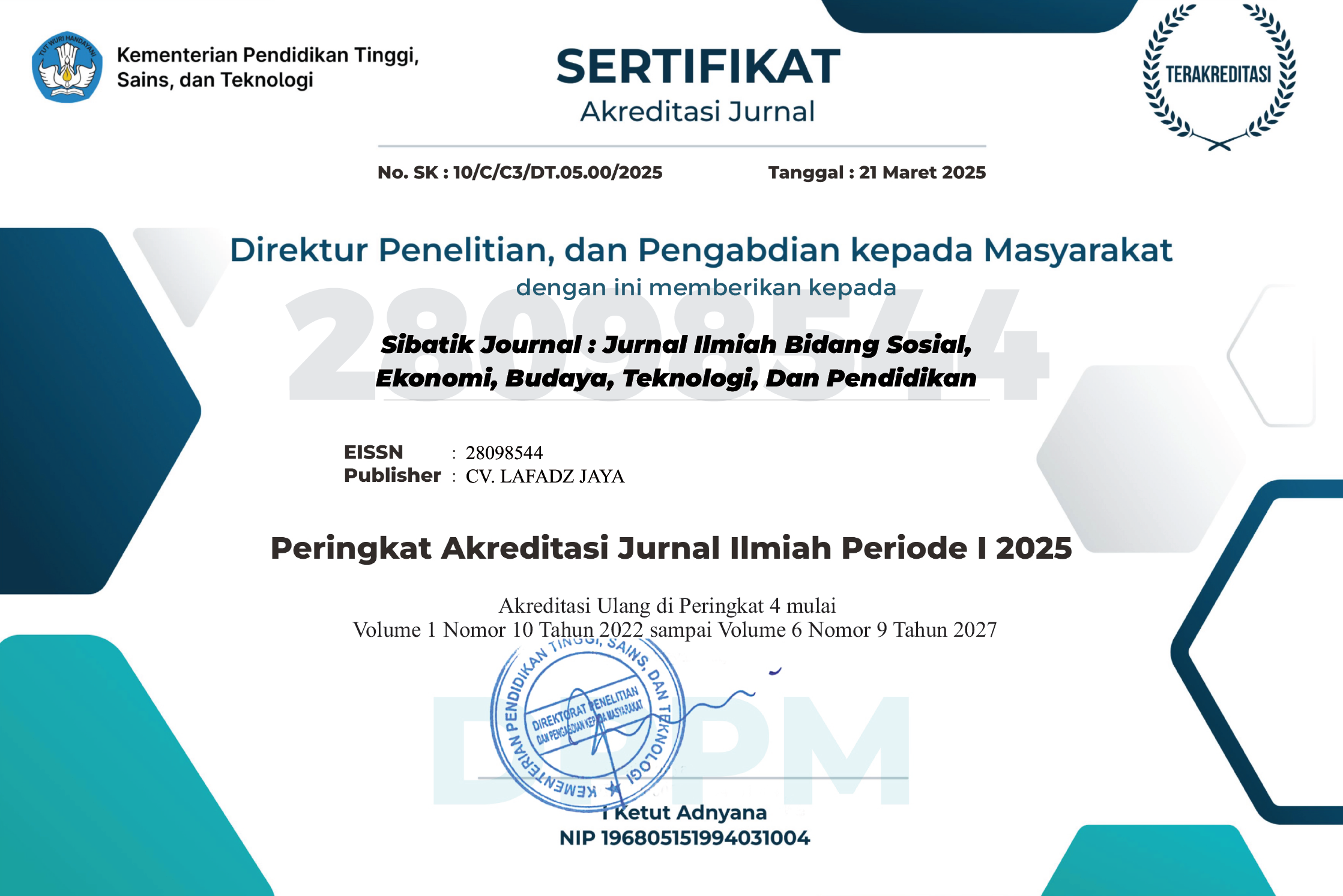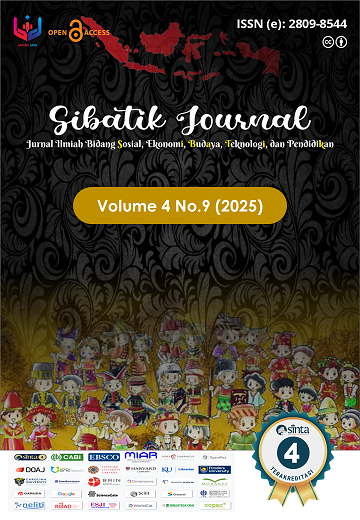LONELINESS PADA SISWA PELAKU SELF-HARM
Main Article Content
Mita Julita
Frischa Meivilona Yendi
Yarmis Syukur
Soeci Izzati Adlya
This study is motivated by the persistence of self-harm behavior among adolescents with feelings of loneliness. Loneliness can arise due to obstacles in establishing social relationships, lack of emotional support, and experiences of rejection from the surrounding environment, causing students who self-harm to feel isolated both at school and at home. This study aims to explore loneliness in self-harming students based on three aspects of loneliness: trait loneliness, social desirability loneliness, and depression loneliness. The study uses a quantitative descriptive method. The population in this study consisted of students from five public high schools in Pariaman City, totaling 4,051 students. The sample was 70 self-harming students selected through purposive sampling. The instrument used was a loneliness questionnaire that has been tested for validity and reliability. Data analysis was performed using descriptive statistics. The results indicate that most self-harming students fall into the moderate category of loneliness across all three aspects. This finding highlights the importance of addressing loneliness as a primary factor in preventing self-harm behavior among adolescents.
Afrianti, R. (2020). Intensi melukai diri remaja ditinjau berdasarkan pola komunikasi orang tua. Mediapsi, 6(1), 37–47.
Agriyanti, F. E., & Rahmasari, T. (2021). Loneliness pada remaja: konsep, aspek, dan cara mengatasi. Jurnal Psikologi Perkembangan, 9(1), 83–90.
Andover, M. S., Morris, B. W., Wren, A., & Bruzzese, M. E. (2012). The co-occurrence of non-suicidal self-injury and attempted suicide among adolescents: distinguishing risk factors and psychosocial correlates. Child and Adolescent Psychiatry and Mental Health, 6(1), 1–7. https://doi.org/10.1186/1753-2000-6-11
Banfatin, D. ., & Lao, H. . (2024). Pengaruh Dukungan Sosial Terhadap Kesejahteraan Psikologi Remaja Di Kota Kupang. Jurnal Ilmu Psikologi Dan Kesehatan (SIKONTAN), 3(2), 53–58. https://doi.org/10.47353/sikontan.v3i2.2101
Batara, C. T., & Kristianingsih, A. (2020). Aspek dan faktor loneliness pada remaja di perkembangan digital. Jurnal Psikologi & Konseling, 12(2), 200–209.
Glenn, C. R., & Klonsky, E. D. (2013). Social context, self-injury, and loneliness: The role of emotion dysregulation. Journal of Social and Clinical Psychology, 32(5), 564–577. https://doi.org/10.1521/jscp.2013.32.5.564
Hakim, F., & Sukmawati, I. (2023). Self-harm sebagai respons tekanan emosional pada remaja sekolah. Jurnal Psikologi Remaja, 12(1), 1–12.
Higgins, J. (2014). Understanding and responding to self-injury: A practical guide. Nursing Times, 110(50), 12–16.
Insani, P., & Savira, T. (2023). Faktor-faktor penyebab self-harm pada remaja. Jurnal Psikologi dan Pendidikan, 14(2), 191–205.
Kusnadi, R. (2021). Self-harm sebagai prediktor bunuh diri pada remaja. Jurnal Gangguan Mental, 4(2), 155–161.
Kusumadewi, L., Rozali, Y. D., Sismantoro, F. I., & Ifdil, I. (2020). Self-harm sebagai kegagalan coping stres pada remaja. Jurnal Konseling dan Pendidikan, 8(3), 157–164.
Mahfud, C., Gumantan, A., & Nugroho, P. (2020). Perkembangan remaja dan permasalahan sosial di era digital. Jurnal Pendidikan Remaja, 14(1), 10–24.
Novianti, Fauza. (2024). Hubungan regulasi emosi dengan kecenderungan perilaku self injury pada siswa SMAN 6 Padang (Skripsi).
Nowan, H. (2008). Loneliness: Human nature and the need for relationships. Kanisius.
Putri, M. A., & Afdal. (2024). Kecenderungan Berperilaku Menyakiti Diri Sendiri (Self Harm) pada Siswa SMA X di Kota Padang. AHKAM: Jurnal Hukum Islam dan Humaniora, Vol. 4 No. 2.
Perlman, D., & Peplau, L. A. (1982). Theoretical approaches to loneliness. In L. A. Peplau & D. Perlman (Eds.), Loneliness: A sourcebook of current theory, research, and therapy (pp. 123–134). Wiley.
Prayitno, & Amti, E. A. (2004). Dasar-dasar bimbingan dan konseling. Rineka Cipta.
Rucita, I. N., & Rahmasari, T. (2022). Faktor penyebab dan bentuk loneliness pada remaja. Jurnal Psikologi Klinis dan Kesehatan Mental, 10(1), 71–82.
Russell, D. (1996). The UCLA loneliness scale (version 3): Reliability, validity, and factor structure. Journal of Personality Assessment, 66(1), 20–40. https://doi.org/10.1207/s15327752jpa6601_2
Russell, D., Peplau, L. A., & Cutrona, C. E. (2012). Loneliness and self-harm: A predictive study among adolescents. Journal of Youth and Adolescence, 41(2), 230–242.
Santrock, J. W. (2019). Adolescence (17th ed.). McGraw-Hill Higher Education.
Tamba, W. F., & Wicaksono, D. A. (2023). Alat Ukur Grit Dalam Bidang Psikologi: Literatur Review. Jurnal Ilmu Psikologi Dan Kesehatan (SIKONTAN), 1(4), 269–276. https://doi.org/10.47353/sikontan.v1i4.681
Tan, V. X., Fildes, J., & Perales, F. (2021). Non-suicidal self-injury and its correlates in adolescents: Prevalence and typology in an Indonesian sample. Journal of Adolescent Health, 68(3), 578–587. https://doi.org/10.1016/j.jadohealth.2020.08.017
Thesalonika, V., & Apsari, A. (2021). Faktor-faktor penyebab self-harm pada kalangan remaja. Jurnal Bimbingan dan Konseling Remaja, 6(1), 27–37.
Valencia, J., & Sinambela, V. (2021). Dampak perilaku self-harm dan risiko bunuh diri pada remaja. Jurnal Kesehatan Jiwa Remaja, 11(2), 155–166.
Whitlock, J., Minton, R., Babington, P., & Ernhout, C. (2015). The relationship between non-suicidal self-injury and suicide. The Information Brief Series, Cornell Research Program on Self-Injury and Recovery, Ithaca, NY.
Wibisono, S. (2018). Faktor internal dan eksternal perilaku self-harm pada remaja. Jurnal Psikologi Pendidikan dan Konseling, 4(2), 101–109.
Yendi, F., Ardi, Z., & Ifdil, I. (2013). Peran layanan bimbingan konseling dalam pengembangan kesehatan mental siswa. Jurnal Bimbingan Konseling, 2(1), 14–25.

























